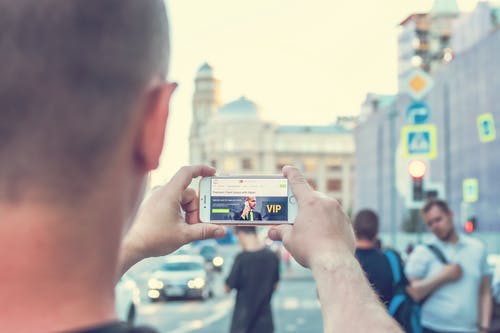Augmented reality and virtual reality get most of their fame from the videogame industry, but the more practical uses are becoming more and more utilized across almost every major industry in the United States. Virtual reality is a complete sensical change from an individual’s given surrounding, and generally involves putting on some kind of encompassing headgear that shuts out what is actually around the users. Augmented reality, on the other hand, utilizes technology created to interact with reality, “augmenting” what is actually already there. One of the simplest examples would be a photo filter on your phone that adds sunglasses to whomever you’re taking a picture of. This article will take a look at 5 industries that can (or are already) benefit from evolutions in Augmented Reality (AR).
Construction
Augmented reality in construction can serve a number of purposes, with two of the most important being in safety and saving money. The U.S. construction business generates more than $1.2 trillion every year, and employs more than 7 million Americans. With that many players in the game, even pennies saved here and there can add up quickly. Recent trends, mainly caused by regulation and availability from the public sector, have shown lacks of productivity in the construction industry caused by poor design, poor management, and lacks in development.
AR models can help identify design issues before building starts, saving time and money, and can also help during construction, showing precise directions regarding certain installations and trades. AR is also being heavily utilized in training, and the construction sector is following suit.
Rehabilitation
The uses for AR in healthcare are aplenty, and growing by the day; however, most uses are still in a “clinical trials” phase to determine what is working and what is not. When it comes to rehab, though, AR is already a proven means of increasing therapy outputs. For PTSD, in particular, augmented reality programs can help patients take very small “doses” of whatever causes their trauma in an attempt to slowly ween them off the fear. For soldiers, this can mean subtly adapting to loud noises in a controlled environment until those noises and interruptions no longer act as triggers for past traumatic experiences.
Nursing
For nursing, training is a part of the weekly grind. From cultural diversity training to new procedures, nurses are permanently learning, and AR is giving them a chance to do so in a much more effective manner. Smart glasses are a new technology that allow nurses to work on a patient while having information about the procedure appear, literally, right in front of their eyes on a glass screen that is something out of a James Bond film. This AR training also allows for nurses to get more experience without actually working on a sick individual.
Education
As a whole, the education sector serves to benefit greatly from AR as well. For trade schools, the possibilities are almost endless, but even general, every day education is enacting some forms of augmented reality into their curriculums. There are many AR apps being tailored for education, and as long as schools can provide equal means of utilizing these technologies among all students, the interactive aspects are expected to help students stay focused, as well.
Video Games
Of course, video games are still the industry that most of us first saw AR in action, with the Pokemon Go’s of the world, and the industry certainly isn’t shying away from AR now that it’s becoming popular in other sectors of business. Global augmented reality is the “new future” and allows gamers to, literally, see things that only exist digitally, all across the actual world we live in and breath on every day.







